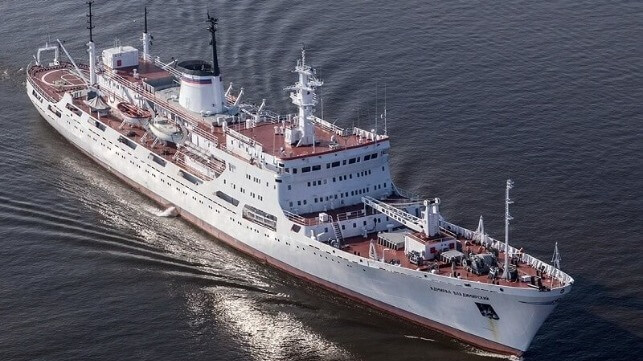Contract Awards for Vast EU Offshore Power Grid Reach $33 Billion

Transmission grid operator TenneT has completed the largest contract tender ever awarded in Europe for green transition infrastructure. Adding to an initial round announced in March, TenneT today signed deals with seven different industrial suppliers to build out the offshore wind power transmission system for the German and Dutch North Sea. The contract signing brings the total for all project awards to $33 billion.
“As the leading offshore transmission system operator in the EU, we have the know-how needed to make Europe’s goal of securing an independent supply of renewable energies a reality. To achieve this, the North Sea must be developed as Europe’s green power house and quickly connected to the electricity grids on land," said Tim Meyerjürgens, COO of TenneT.
TenneT needs to build out enough transmission capacity to handle 40 GW of wind power in Dutch and German waters, which will enable two-thirds of the 65 GW offshore wind energy target set by Germany, the Netherlands, Denmark, and Belgium. The scope of the overall project requires construction of 14 different power converter and transmission systems, and TenneT is bringing in most of the world's major offshore contractors in order to complete the work. (Chinese contractors were excluded from the Dutch segment of the project on security grounds, according th Upstream.)
In March, TenneT awarded an initial package of contracts to three consortia: Hitachi Energy/Petrofac, with six projects; GE/Sembcorp, with three projects; and GE/McDermott/Sembmarine, with two projects. The total came to $25 billion worth of industrial activity.
On Thursday, TenneT awarded an additional $8 billion worth of work for the last three systems to Hitachi Energy/Petrofac, GE/Sembcorp, GE/McDermott and Siemens Energy/Dragados. The core components of TenneT's proprietary 2GW power transmission system will be built in Europe.
The scope for each project includes offshore and onshore converter stations, along with TenneT's next-gen HVDC technology. The suppliers will start the preparatory work for the projects immediately to make sure that the system can be finished by 2031.
"Shorter contracting processes, large-scale tenders and standardization of solutions show how grid operators and manufacturers are already pulling together to get green energy to consumers faster," said Tim Holt, member of the Siemens Energy Executive Board. "However, in order for the industry to continue ramping up capacity, all available levers must now be pulled at the policy level as well – from raw material and skilled labor strategies to further streamlining permitting processes at all levels.”
Report: Russia is Studying Europe's Subsea Cables With Covert Fleet

In a pattern echoing back to the Cold War, Russia has deployed a covert fleet of trawlers and research ships to identify vulnerabilities in the subsea cable network off the coasts of NATO nations, according to a new joint report by public broadcasters in Denmark, Norway, Finland and Sweden.
In a new in-depth documentary dubbed "The Shadow War," these four outlets detail a large-scale subsea surveillance operation targeting key communications and electrical transmission infrastructure in the Baltic, the North Sea and the Norwegian Sea. The BBC separately confirms that Russia has a similar program in place for surveilling British waters, as widely suspected.
The first episode follows the oceanographic research vessel Admiral Vladimirsky, a civilian government-owned ship with dual-purpose capabilities. With help from a former Royal Navy expert, the reporting team tracked the Vladimirsky on a tour of about 11 different wind farms in the Baltic and the North Sea, the majority in UK waters. When Danish reporters approached the Vladimirsky in a small launch, they were greeted not by a deck officer, but by an armed guard with body armor and a rifle - a greeting more appropriate to the coast of Somalia than the uneventful waters of the Skaggerak.
If the Vladimirsky's mission is as described, the subsea mapping of power transmission infrastructure near windfarms could be used in a potential conflict to disrupt the European electrical grid.
"This is a strategic capacity for Russia, which is considered very important and is controlled directly from Moscow," said Nils Andreas Stensønes, head of the Norwegian Intelligence Service, speaking to reporters with the project.
In a possible preview of these gray-zone tactics, communications cables to and from the Norwegian island of Svalbard were cut in April 2021 - and the interruption coincided with a Russian trawler crossing and recrossing the cable route. "Of course, Russia denies any responsibility for the cable disruption, but it matches up in time, location and capacity," said Karen-Anna Eggen, a fellow of the Norwegian Institute for Defence Studies, speaking to EuroNews.
Linkages between civilian ships and state business are far from unusual. The white hulls of the U.S. National Oceanographic and Atmospheric Administration are crewed by commissioned officers with security clearances, and American universities' T-AGOR academic research vessels are owned and maintained by the U.S. Navy. In a more formal example, China operates a fleet of "maritime militia" fishing vessels whose crewmembers are enrolled militia members with military training and armament. Though Beijing denies that they have any role beyond fishing, these well-maintained trawlers spend weeks or months near politically sensitive locations, without generating commercial revenue to support their operations.
Russia also has a long history of operating "civilian" covert ships. During the Cold War, Soviet trawlers with altered superstructures and large antennas were a common sight near U.S. Navy training exercises and naval operations. In the mid-1960s, they became so common that the U.S. came up with a catch-all descriptor and named them "Auxiliary General Intelligence" vessels (AGIs).
No comments:
Post a Comment